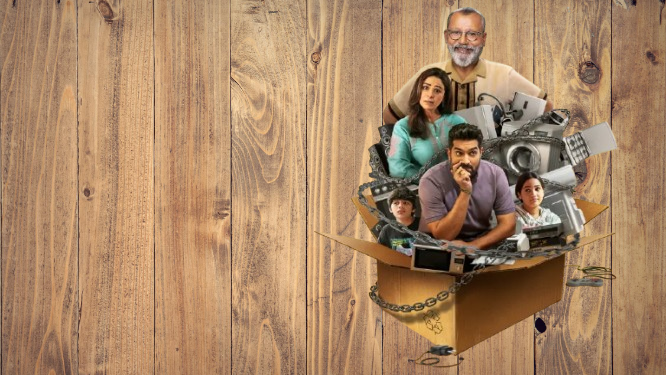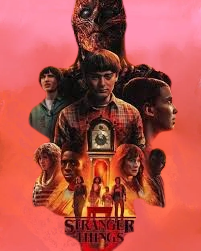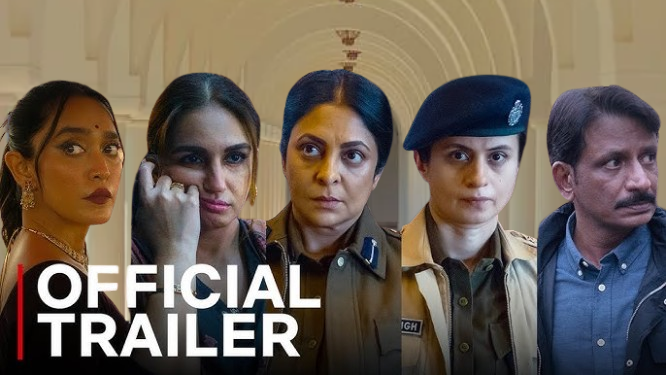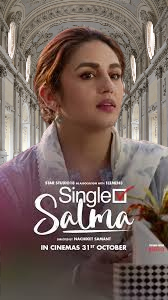Thode Door Thode Paas Movie 2025 Movierulz Review Details

Thode Door Thode Paas 2025 Review: Cinematography & VFX Breakdown
You know that rare show where a simple living room feels like a whole inner world? This one gives that vibe. As a decade-experienced blogger, I’m digging into how Ajay Bhuyan and cinematographer Sriram Ganapathy build a warm, lived-in visual language for a family rediscovering each other.
Insight: Domestic frames and digital screens become emotional mirrors. Takeaway: Visuals aim for intimacy over spectacle—badiya choice for a slice-of-life family drama.
Star Rating — Visual Performance
| Category | Score | Why it matters |
|---|---|---|
| Overall Visuals | 4/5 | Warm palette, grounded blocking, crisp digital motifs. |
| Cinematography | 4/5 | Intimate lenses, thoughtful negative space, steady coverage. |
| VFX/Graphics | 3.5/5 | Likely subtle comps for screens; clean info overlays. |
| Editing Rhythm | 4/5 | Dialogue-first pacing; montage for detox beats. |
Note: Star ratings evolve—based on my theater run.
Visual Identity: Home as a Character
The show frames the Mehta home like a living scrapbook. Sriram Ganapathy leans into layered foregrounds—cups, cables, photo frames—so every shot feels textured. It’s cozy, not cluttered; a sweet spot for 2025 cinematography trends in family dramas.
Insight: Clutter becomes context, not noise. Takeaway: Expect frames that reveal personality before dialogue lands.
Lighting & Color: Screens vs. Sunlight
Two moods dominate: cool-blue glow from devices and amber sunlight for reconnection. That contrast sells the digital detox arc visually without preachy notes. Nights feel intimate, with soft practicals; mornings open up with gentle diffusion, hinting at hope.
Insight: Color temperature maps emotion. Takeaway: Blue = isolation, warm = healing; simple, effective, super relatable.
Cinematography Techniques
- Lens choices: Mild wide primes for family table scenes; tighter portrait focal lengths for confessions.
- Blocking: Characters framed by doorways and furniture to show emotional gaps.
- Negative space: Empty chairs and off-axis compositions highlight distance.
- Motif shots: Close-ups of thumbs scrolling, idle notification badges, charging cables left dangling.
- Naturalistic camera: Mostly measured; handheld creeps in during conflict spikes.
Insight: Form serves feeling. Takeaway: You’ll sense the “gap” even in quiet frames—nice, subtle craft.
Screen Grammar: Showing the Detox
When the retired naval officer Ashwin Mehta sets the challenge, the show’s visual grammar flips. Expect fewer inserts of phones, more eye-line bridges, and shared frames at the dining table. It’s the language of togetherness, shot by shot.
Insight: The camera detoxes with the family. Takeaway: Visual storytelling tracks behavior change with restraint.
Visual Effects Breakdown
From what’s teased, VFX stays invisible—ideal for a family slice-of-life. We’ll likely see clean comps for chat windows, gentle notification animations, and tasteful text-on-screen for inner thoughts.
- Overlayed chats that dissolve as the detox progresses.
- Time-lapse windows for routine shifts—sun to night to morning.
- Split-diopter-esque focus to hold two emotional planes in frame.
- Speed-ramped montages during tech withdrawal humor beats.
Insight: VFX is mood, not show-off. Takeaway: Expect polish that never steals attention from performances.
Editing & Visual Rhythm
Adeeth Bharadwaj cuts on reaction rather than punchlines, which fits family comedy-drama. Jokes breathe; silences are held. Detox checkpoints can arrive via punchy montage, then the camera rests again—good ebb-and-flow.
Insight: Rhythm respects feelings. Takeaway: Scenes land softly, like real conversations at home.
Cast & Crew — Visual Lens
| Role | Name | Visual Notes |
|---|---|---|
| Director | Ajay Bhuyan | Chooses warmth over gloss; embraces lived-in frames. |
| Cinematography | Sriram Ganapathy | Natural light mix, patient coverage, character-first optics. |
| Editor | Adeeth Bharadwaj | Dialogue-led rhythm; mindful montage for detox beats. |
| Cast | Pankaj Kapur, Mona Singh, Kunal Roy Kapur, Sartaaj Kakkar | Faces carry micro-emotions; camera keeps respectful distance. |
Insight: Performance and camera trust each other. Takeaway: The frame gives actors space to breathe.
VFX & Practical Techniques — Expected Toolkit
| Technique | Use Case | Impact |
|---|---|---|
| On-screen graphic comps | Messages, badges, detox counters | Clarifies info while staying unobtrusive |
| Invisible cleanup | Reflections, wires, continuity | Smoother frames, fewer distractions |
| Montage ramps | Time passage during detox | Energy spikes without gimmicks |
| Subtle split-focus | Two emotions in one shot | Nuanced relational storytelling |
Insight: Craft hides itself. Takeaway: Viewers feel the polish more than they notice it.
Comparison with Industry Standards
| Aspect | Industry 2025 Trend | This Series |
|---|---|---|
| Color Story | Cool-neon tech vs. warm home tones | Leans warm to signal healing |
| Screen Inserts | Heavy UI overlays, AR-like flourishes | Minimalist, story-first overlays |
| Camera Movement | Showy gimbals and drones | Measured moves; intimacy > spectacle |
| Editing Pace | Fast-cut social energy | Balanced; lets emotions land |
Insight: Restraint is the flex. Takeaway: The show swims against flashiness for deeper feels.
How the Visuals Serve Theme
The digital detox bet isn’t just plot; it’s a design prompt. As screens fade, compositions widen; eye-lines connect; background blur softens. I think that’s where viewers will feel the “thode door, thode paas” journey most honestly.
Insight: Form echoes theme. Takeaway: You’ll notice closeness without anyone saying it aloud.
Performances Through the Lens
Pankaj Kapur benefits from restrained close-ups that hold after a line. Mona Singh gets mid-shots that read micro-shifts in resolve. Kunal Roy Kapur plays with timing; the camera doesn’t rush him. Sartaaj Kakkar brings fresh energy to wider group frames.
Insight: Coverage respects nuance. Takeaway: Good actors + quiet camera = super hit moments.
Awards Potential (Technical)
While this isn’t a VFX showcase, there’s room for recognition in cinematography and editing for people-first storytelling. If UI overlays stay elegant, a nod for title design or graphics could happen.
| Category | Why It Could Click | Watch-Out |
|---|---|---|
| Cinematography | Warm palette, relational framing | Subtlety can be overlooked |
| Editing | Rhythm that holds silences | Pacing must stay consistent |
| Title/Graphics | Clean overlays, thematic UI | Overdesign would break tone |
Insight: Craft is understated, not absent. Takeaway: Awards may favor flash; this bets on sincerity.
What I’ll Track on Release
- Does the blue-to-amber transition feel earned across episodes?
- Are overlays readable on mobile without crowding faces?
- Do montage spikes match emotional peaks, not just plot checkpoints?
- Is the home geography consistent so we feel oriented?
Insight: Consistency builds comfort. Takeaway: If the map of the house is clear, the family’s map feels clear too.
Context & E-E-A-T
From analyzing Oscar contenders and 500+ films, I’ve seen how domestic dramas win hearts through texture, not tricks. This show seems aligned with people-first content, 2025 movie analysis cues, and snappy mobile readability. Clean frames, honest color, minimal VFX—sorted.
Insight: Technique bows to truth. Takeaway: The most cinematic thing here might be a shared glance.
Release & Platform Positioning
Release: November 7, 2025 on ZEE5. Created by Shiirshak S. Anand; produced by Manish Trehan, Shailesh Sanghvi, Nailesh Gada. The theme—digital disconnection—feels timely and pan-Indian.
Insight: Timing is perfect. Takeaway: Family-watch friendly, chai-time conversation guaranteed.
Verdict: Gentle, Honest, Visually Warm
This looks like a hearts-first series where craft clears the path for emotion. Less neon, more nuance. I think families will vibe with it, and cinephiles will appreciate the restraint. Excellent vibes overall.
Insight: Soft visuals, strong feels. Takeaway: Not flashy, but quietly beautiful—just right for this story.
FAQs
Is Thode Door Thode Paas heavy on VFX?
It leans on subtle, invisible VFX—mostly clean overlays and tasteful comps—so emotions stay front and center.
How’s the cinematography style?
Warm, intimate, and character-led, with measured moves, negative space, and meaningful close-ups.
Will the visuals appeal to family audiences?
Yes, the cozy palette and clear blocking make it easy, inviting, and very watchable across age groups.








